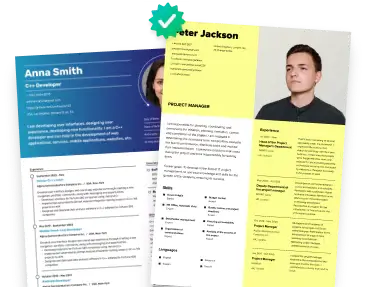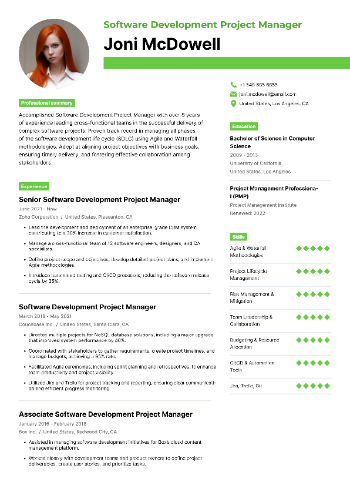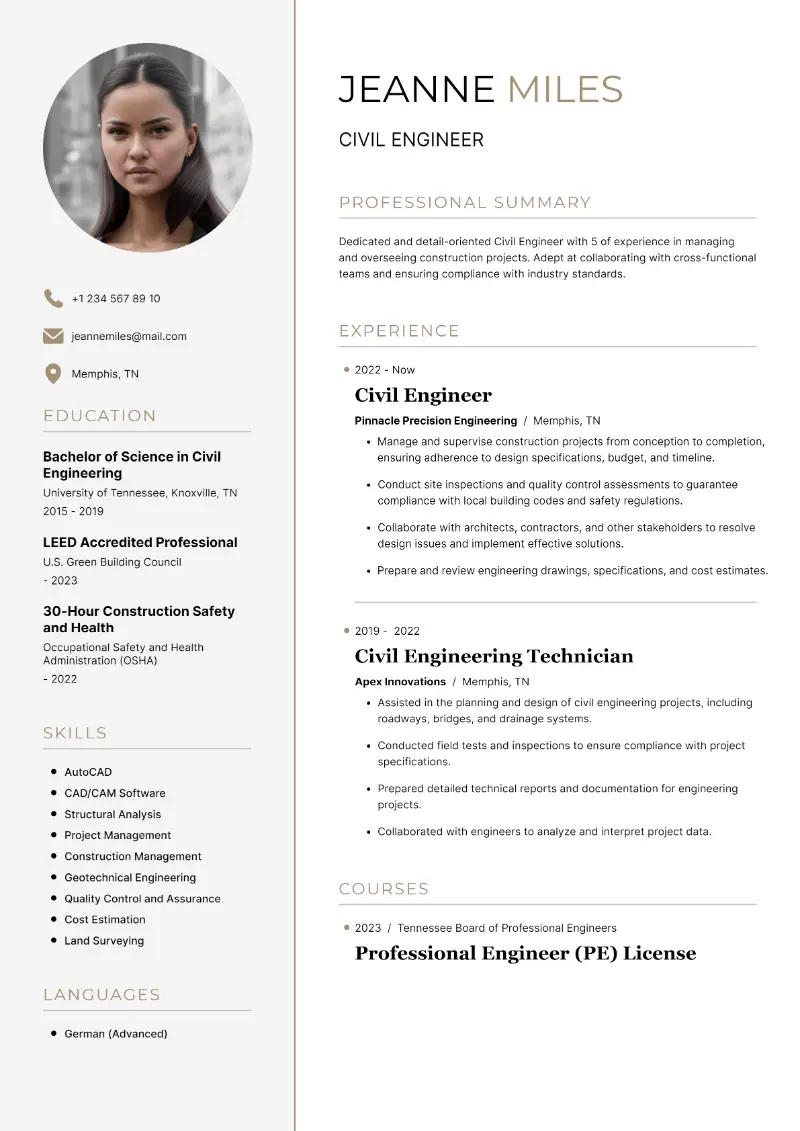A well-thought-out career development plan serves as a roadmap, guiding individuals through the twists and turns of professional growth.
In this article, we'll explore what the job development plan is, the benefits it offers, and practical steps to help you create a personalized list.
What is a career development plan?
Career management plan is a structured and strategic outline that helps people identify their work goals, the skills and qualifications they need to achieve them, and the steps required to progress along their path.
It is a dynamic tool that enables individuals to take control of their growth, offering a clear roadmap for aspirations.
Personal career development plan includes:
- Understanding your strengths, weaknesses, interests, values, and skills.
- Clearly defined short and long-term goals that provide direction and purpose.
- Identifying the knowledge, certifications, or education you need to develop.
- Concrete steps and timelines for achieving your objectives.
- Regularly reviewing progress and making adjustments to stay on track.
- Seeking feedback from mentors, peers, and supervisors to improve performance.
- Building a network of professional contacts to support growth opportunities.
How to create a career development plan?
Career planning and development involves a series of steps that help you clarify your goals and outline the actions needed to get them.
1. Conduct a self-assessment
- Reflect on your background. What do you do well, and where could you improve?
- Consider what you enjoy doing in your job or personal life.
- Think about what's important to you in a career (e.g., work-life balance, leadership opportunities, financial rewards).
- Identify your core values and how they align with your career path.
2. Set clear goals
- Recognize what want to achieve in the next 1-3 years.
- Define your long-term objectives, such as advancing to an executive position.
- Ensure your aspirations are SMART (Specific, Measurable, Achievable, Relevant, and Time-bound).
- Separate larger goals into smaller, manageable tasks to track progress.
4. Create an action plan
- Break down each goal into smaller, manageable tasks or milestones.
- List concrete actions you need to take.
- Assign deadlines for each task.
- Identify potential resources or support needed to complete each task.
5. Track your progress
- Set aside time to regularly evaluate your progress, such as quarterly or annually.
- Sometimes circumstances change, or you may discover new interests. Adjust your plan as needed.
- Celebrate milestones to stay motivated and acknowledge your growth.
6. Stay committed
- Stay disciplined and committed to your plan, even when faced with setbacks or challenges.
- Recognize and celebrate when you reach a milestone.
- Regularly revisit your goals to reinforce motivation and adapt as needed.
Career development plan template
- Self-Assessment
- Career Goals
- Skills and Qualifications Needed
- Action Plan
- Timeline and Milestones
- Resources Needed
- Evaluation and Adjustments
- Support and Mentorship
- Potential Obstacles and Solutions
- Success Metrics and Indicators
Career development plan examples
Software developer career growth plan
Self-Assessment:
- Strengths: Coding, problem-solving, quick learner.
- Weaknesses: Limited experience in leading teams, needs better communication skills.
- Interests: Software architecture, cloud computing.
Career Goals
Short-term (1-2 years):
- Gain proficiency in new programming languages (e.g., Python, JavaScript).
- Complete a project involving cloud technologies like AWS or Azure.
- Improve communication skills to better collaborate with teams.
Long-term (3-5 years):
- Become a Senior Software Developer or Architect.
- Lead a development team.
- Enhance a personal portfolio.
Skills and Qualifications:
- Learn advanced programming concepts.
- Obtain certifications in AWS.
- Improve soft skills like leadership, conflict resolution, and time management.
Action Plan
Year 1:
- Complete an online course in cloud computing.
- Contribute to open-source projects.
- Attend networking events and hackathons.
Year 2:
- Earn a certification in AWS.
- Take a leadership training course.
- Lead a small team or project internally.
Evaluation:
Review progress in coding and project leadership every 6 months. Adjust the plan based on any career shifts or new interests in technologies.
2. Nurse career development planning
Self-Assessment:
- Strengths: Compassionate, excellent patient care, good team player.
- Weaknesses: Limited administrative experience, needs more clinical knowledge (e.g., ICU).
- Interests: Specializing in pediatric care.
Career Goals
Short-term (1-2 years):
- Gain experience in pediatric care through rotations.
- Obtain certifications in pediatric advanced life support (PALS).
- Develop leadership skills by mentoring junior nurses.
Long-term (3-5 years):
- Become a Pediatric Nurse Practitioner.
- Take on a leadership role in the nursing team, such as Charge Nurse.
Skills and Qualifications:
- Obtain PALS and CPR certifications.
- Complete a Master’s in Nursing (MSN) with a focus on pediatrics.
- Improve time management and decision-making skills.
Action Plan
Year 1:
- Complete a pediatric nursing course.
- Attend workshops on patient communication.
- Volunteer for extra shifts in pediatric departments.
Year 2:
- Pursue advanced nursing degrees (MSN).
- Take on leadership responsibilities, such as supervising shifts or leading patient care teams.
Evaluation:
Review clinical expertise and leadership progress annually. Reassess goals if advancing in pediatric care becomes more challenging or if a different specialty sparks interest.
3. Digital marketing specialist career pathway plan
Self-Assessment:
- Strengths: Creative thinking, strong knowledge of social media platforms, analytical skills.
- Weaknesses: Limited experience with SEO, needs more understanding of automation tools.
- Interests: E-commerce and data-driven marketing strategies.
Career Goals
Short-term (1-2 years):
- Develop a deeper understanding of SEO and SEM.
- Gain hands-on experience with marketing automation platforms (e.g., HubSpot).
- Work on increasing traffic to client websites through targeted campaigns.
Long-term (3-5 years):
- Become a Digital Marketing Manager or Marketing Strategist.
- Specialize in e-commerce marketing and data analytics.
Skills and Qualifications:
- Gain proficiency in SEO and SEM.
- Learn to use marketing tools.
- Develop project management and leadership skills.
Action Plan
Year 1:
- Enroll in an SEO course.
- Get hands-on experience with Google Ads and Google Analytics.
- Implement a small-scale marketing campaign for personal or freelance clients.
Year 2:
- Master marketing automation tools and CRM systems.
- Lead a marketing team or collaborate with larger teams.
- Pursue certifications such as Google Analytics or HubSpot Inbound Marketing.
Evaluation:
Track campaign results and engagement. Review progress on SEO goals. Adjust strategies if e-commerce marketing becomes a more prominent interest.
4. Financial analyst career development action plan
Self-Assessment:
- Strengths: Strong analytical skills, attention to detail, proficiency with financial software (Excel, QuickBooks).
- Weaknesses: Needs deeper knowledge in investment strategies, lacks leadership experience.
- Interests: Corporate finance, mergers and acquisitions.
Career Goals
Short-term (1-2 years):
- Learn advanced financial modeling techniques.
- Gain experience in investment analysis.
- Build strong networking relationships within the finance industry.
Long-term (3-5 years):
- Become a Senior Financial Analyst or Portfolio Manager.
- Pursue a CFA (Chartered Financial Analyst) certification.
- Specialize in mergers and acquisitions (M&A).
Skills and Qualifications:
- Learn advanced Excel modeling and financial forecasting techniques.
- Pursue a CFA or MBA with a focus on finance.
- Improve leadership and presentation skills.
Action Plan
Year 1:
- Complete an advanced financial modeling course.
- Network with senior analysts and attend finance conferences.
- Work on gaining exposure to M&A transactions.
Year 2:
- Enroll in CFA Level 1 preparation.
- Pursue more opportunities, such as leading small projects or teams.
Evaluation:
Review progress in financial modeling and network growth annually. Adjust goals based on career direction, such as shifting focus toward investment banking or corporate finance.
5. Teacher career and personal planning
Self-Assessment:
- Strengths: Strong communication skills, patience, passion for teaching.
- Weaknesses: Limited experience in teaching higher grades, lacks familiarity with digital learning tools.
- Interests: Specializing in curriculum development.
Career Goals
Short-term (1-2 years):
- Incorporate technology into teaching methods (e.g., using learning management systems).
- Gain experience teaching higher grade levels.
- Complete a certification in educational technology.
Long-term (3-5 years):
- Become a Curriculum Developer or Instructional Coordinator.
- Lead workshops or professional development programs for teachers.
Skills and Qualifications:
- Gain expertise in educational tools (e.g., Google Classroom, Moodle).
- Complete certifications in curriculum design and digital learning strategies.
- Improve leadership and mentorship skills.
Action Plan
Year 1:
- Attend workshops on integrating technology into the classroom.
- Participate in teacher communities and online forums to stay updated on new teaching strategies.
- Develop a personal teaching blog or resource hub.
Year 2:
- Take a certification course in instructional design.
- Lead a teaching project or pilot new digital learning tools in the classroom.
Evaluation:
Assess teaching effectiveness and technology integration progress at the end of each semester. Adjust development path if interest in curriculum design grows.
Conclusion
A well-crafted career development plan is an essential tool for anyone looking to take control of their professional growth.
Whether you're just starting out, looking to advance in your current role, or contemplating a career change, a job plan provides direction and focus, helping you navigate challenges and seize new opportunities.
Create your professional Resume in 10 minutes for FREE
Build My Resume


















